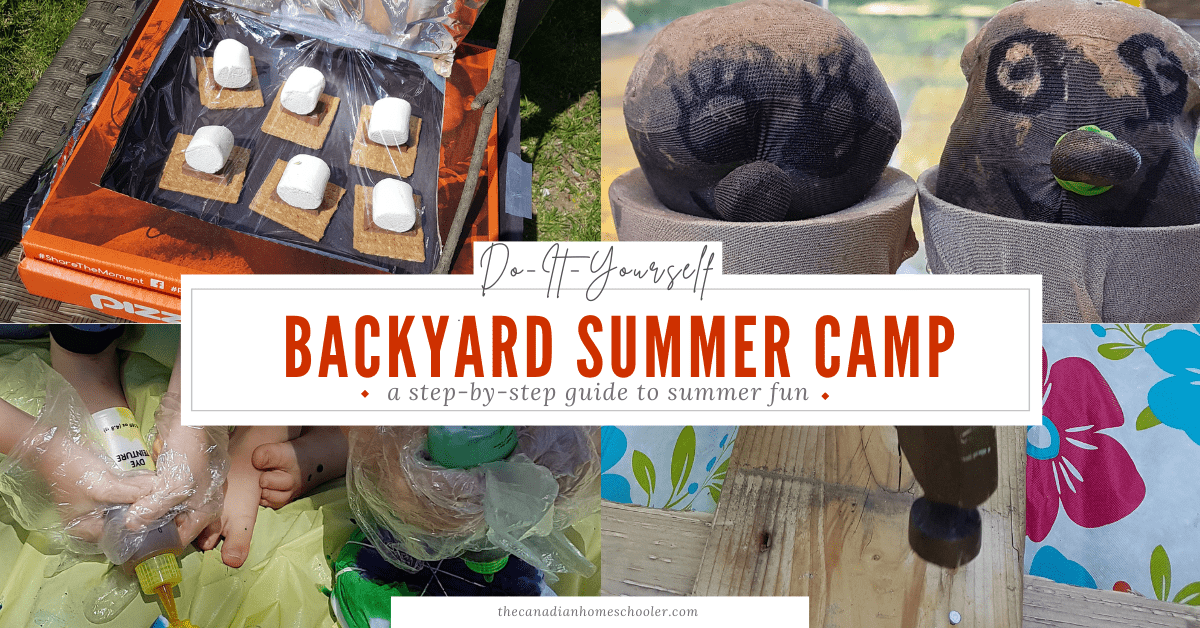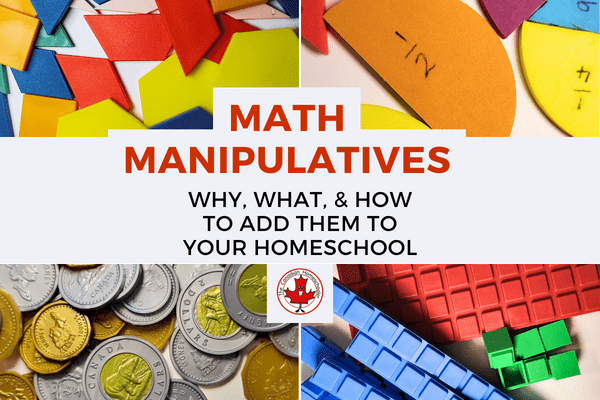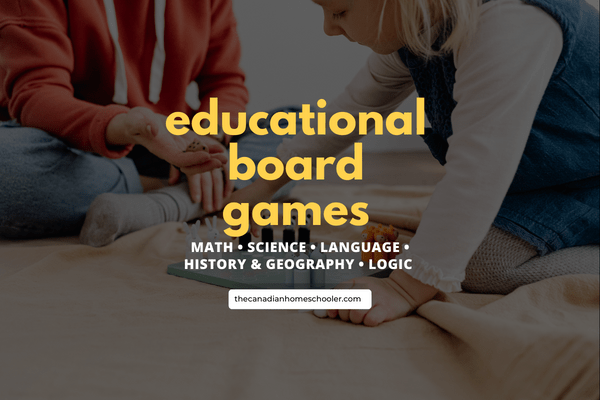When homeschooling, it can get challenging to get past the “to-do” lesson plan and find a way to have fun in our days. I recently asked my kids how we can make homeschooling fun. I thought that it could give me some insight into ways that I could change things up and include them in the process. The answer they gave? “Take out the ‘school’ part.” – Well, rats.
For some reason, children seemed conditioned to think of school as something boring or bad – even if they have a lot of fun doing it. So I understand why I got the answer I did. But that doesn’t mean that we don’t have fun in our homeschool. They probably don’t even realize that we’re doing “school” things when we add in the fun bits, because they are too busy enjoying themselves.

Here are some of the many ways that we include an element of fun into our homeschool days. Maybe you will find some of them helpful to change things up in your house.
Present Learning in a Whole New Way
That ‘school” part can get boring pretty easily, especially when they know what to expect because it’s always been the same or because they are struggling with the materials. That’s why presenting it in a different way can make homeschooling fun again.
Here are some examples:
Math time, in particular, can get that bored face pretty quickly around our house. So sometimes I have to get creative to keep engagement. Over the years, I’ve tried lots of things to move the lesson off the pages of our curriculum workbooks.
- Using a mini chalkboard or a whiteboard to solve the math questions instead of scrap paper.
- Watching the lessons in video format, either by the company we’re using at the time (if they have one), or other resources like Khan Academy.
- Giving them a computer day instead of a paper day. There are lots of options available online to practice math concepts in a way that makes it fun – like IXL, Prodigy, and Multiplication.com.
- If you have access to the digital file of your math program, screencast it on your biggest television, if possible. There’s something fun about seeing it oversized and on a screen that adds a unique element to the lesson.
Some examples for other subjects include:
- Sending emails to grandparents or friends for language
- Watching movies for history (check out TeachWithMovies.org for ideas)
- Putting audiobooks, podcasts, or narrations like Headphone History in the car to do read-alouds or cover a topic you are currently studying
- Turning topics 3D – make models or dioramas to expand understanding
Go Somewhere New / Do it With Someone
Sometimes just moving to a whole new location to learn the same thing can change it up enough to make it more enjoyable. I mean, who wouldn’t love doing school on the beach between rock hunting and getting wet? Or at a playground where every right answer equals 2 trips down the slide? But you don’t even need to get that carried away.
Move to a new place in the house. If you always do school at the kitchen table, today – try the living room floor. Or your bed.
Go outside. If the weather is nice and you have a backyard, you can throw down a blanket and work right there in the grass. We’ve had lots of fun learning times on a trampoline which usually escalates into some fitness time after the books have been finished.
Invite another homeschooling family over to do school with. Even if you aren’t doing the same programs or use the same approach, it can still be more fun to sit at a table with friends and work on your own thing than to do it alone. And, when you are done, you can shift right into play mode.
Add Spontaneity
When things have lost their spark, a change can really help. Especially if they don’t know it’s coming. You can just wake up one morning and decide that you are going to do something unexpected. (Or, you can secretly figure out all the logistics you need to make things work ahead of time and appear spontaneous to your kids when you announce it over breakfast.
This can include:
- A field trip
- An adventure like geocaching or scavenger hunt or exploring your town
- Playdates
- Lunch or an afternoon treat out
- Whip cream on your pancakes instead of maple syrup
It doesn’t need to be a great big huge thing – and it doesn’t need to cost you oodles of money unless you have that on the standby.
Some of our favourites have been going to visit their dad at work or going for ice cream at McDonalds in the middle of the afternoon as a thank you for finishing their to-do lists.
Build the Homeschool Fun Right In
When planning your homeschool year, be intentional about adding fun.
Choose an engaging curriculum that they (and you!) really enjoy. I know that this can be a challenge and sometimes it might not even be possible, but see what you can find. For example, my daughter loves art, colour, and quality time so I found the current fad of beautiful curriculum programs to help her enjoy it, especially when they encourage us to spend time together and I can feed her desire to do things with people.
Add in some extras based on their passions and interests. If your child loves computers, for example, you can add a programming curriculum or Minecraft themed resources to connect their passions into school.
In a world where everything is mostly digital, getting something physical in the mail can be extra special. Something like a monthly subscription box or a magazine that ties into the topic of the year can be fun. I know my son loves getting his quarterly LEGO magazine in the mailbox!
You know those special day calendars that let you know today is “Chocolate Donut Day” or “Talk Like a Pirate Day?” You can intentionally plan to include some of these into your homeschool life. Using these makes adding something fun much easier because you don’t have to come up with a topic or something special. Just pick from the list of what a day symbolizes and have fun with that.
Gamification
Gamification comes in two parts. The first is using games to learn, the other is to turn learning into a game.
Using Games to Learn
We live in a world full of amazing games. You can probably find a game to cover just about any subject that you want to learn or review. These can be video games, board games, card games…. You name it.
I often refer to games as sneak schooling, because most of the time the kids are having too much fun to realize that they are learning things.
It is honestly amazing what kids learn through video games, for example. If your child loves Minecraft, listen to the nearly unending stream of information they share with you about what they’ve been doing and learning: Biomes and ecosystems. Perimeter and area. Elements and how materials work together to make other things. And much more. Architecture and design.
Whatever subjects you are studying in school, take a look to see if there is a game that you can use to reinforce the lessons you are doing and add it to your day.
Turning Learning Into a Game
There are lots of simple ways to gamify life that can be applied to things like homeschooling.
Adding a “beat the clock” element instantly adds a fun bit of non-consequential pressure to get something done. We often use this when we do chores because it motivates us to get things done as fast as possible But I’ve been known to use it in the school times too – like “see if you can get your **insert task** done before the timer goes off.” This is especially helpful when people are resisting but you know they can do it.
Another game that we like to do is “car pop quiz.” Car rides can be a challenge with multiple kids, especially when they are prone to fight, be loud, or get car sick easily. Using the pop quiz game can help with distraction. Give each person their own questions at their specific level (but keep in mind that you need to know the answers!) I like to use this with math programs to review mental math for things like multiplication and multistep problems. We don’t keep score and they aren’t allowed to be mean to anyone if they get it wrong.
If you want to step up the gamification, here are a few other ideas you can do:
- Video games in particular often have “Bosses.” These are the big bad guys that you need to defeat. One year when my boys weren’t really all that keen on co-operating, we made a big boss on poster board that had a specific number of health points. The boys earned attack points for each task completed. Every attack point took away one of the boss’ health points and they would battle every day to try and defeat him.
- There is a program called Habitica where you make your own little character and earn experience points, etc for completing tasks on your to-do list. I added things to each of their daily lists including their chores, their school work, and self-care tasks. This was a huge success for a long time. It essentially took our boss idea and digitized it because they were able to form a party together to defeat virtual monsters and earn rewards.

If you aren’t into the video gaming world, you can try something like badges. There’s a reason that programs like Scouts and Girl Guides have been popular. Having something tangible to earn for working on something and learning skills is wonderful motivation for accomplishment.
Let Them Get Messy
I know. I saw your eye twitch as you read that title. BUT – mess is one of the key best things of childhood. If you can find a way to set aside your internal mess panic meter, you can really add a whole new layer of fun to your homeschool.
Here are some ways to add the mess to your homeschool days:
- Do art beyond just drawing and colouring. Give them an opportunity to explore different tools and mediums – acrylic and water paints, oil pastels, permanent markers, tye-dye, clay, plasticine, etc. Make a bin of craft “stuff,” add in some tape, scissors, and glue.
- Do science experiments. Actually testing the how, why, when, what, and what if, takes scientific concepts and moves them beyond ideas into reality.
- Make sensory bins. Let them play with all kinds of textures and things that they might not usually be allowed to touch or use. It allows for a unique opportunity to explore and learn.
- Let them in the kitchen. Give them the opportunity to explore baking and cooking. This not only gives important life skills, but also can lead to them being able to help you.
- Go outside. And don’t be afraid of mud, dirt, puddles, or all the other things that can be messy outdoors.
Tips to Quell Your Mess Alarm
- Use plastic tablecloths to cover surfaces.
- Cover your kids in old clothes or aprons.
- Do it outside or an easy to clean location, if possible.
- Set boundaries and limits for the what, where, how, and when.
- Encourage them to help clean up the messes they make.
Get Into Your Community
Check to see what’s going on in your local community and see how you can get involved. Many times, these give you unique opportunities to try something new, meet new people, and support the businesses, organizations, and people around you.
Find groups and classes to join. Places to look include the YMCA, the library, an art or history museum, churches, the Legion, community centres, etc.
Don’t forget to check out local events. Watch for community craft sales, cultural events, author days, festivals and fairs, holiday activities, theatre performances, etc. See if your community takes part in things like Science Rendez-Vous or Culture Days.
Is there anywhere that you can volunteer? Some places may allow families to come help with projects or programs. See if there is a community clean up day or similar kind of event. If you can’t find something structured, then try a DIY approach. Take the kids to the park with gloves and bags to pick up garbage and help make their community better.
Let the Kids Decide How to Make Homeschool Fun
Thinking back to the answer they gave me above, I thought it might be appropriate end where we started. Homeschooling is a family activity, so why shouldn’t fun be too? Get the kids involved in coming up with a fun plan.
Ask them about the above ideas. What appeals to them? How do they want to include some fun into their homeschool days?
One way that I’ve found helpful is to have them help create a bucket list. [Here’s a free printable bucket list.] We do this mostly as we head into summer but what if they did a bucket list of ideas for the whole school year too? Things they want to do. Tasks they want to complete. Places they want to go. Whatever they’d like. We often say there is no idea too crazy or big to put on the list, but we can’t promise to do them all.
As you embark on your homeschooling adventures, remember to keep fun at the forefront of your journey. Embrace the unexpected, celebrate the messy moments, and cherish the joy of learning together as a family. After all, the greatest lessons are often learned amidst laughter and excitement, reminding us that education is not just about what we teach, but how we inspire a love of learning that lasts a lifetime.
How do you add fun to your homeschool life? I’d love to know. Leave a comment.
This blog post was originally published in 2015 when I hosted the Canadian Homeschool Blogging Team who shared how they incorporate fun into their homeschooling adventures. You can find their links below for more ideas on making homeschool fun. Originally this post included a giveaway from Picaboo Yearbooks. The above post was updated and rewritten in 2024.
Alison – A FUNdamental Education!
Our relaxed, year round schedule of home education lends itself well to ensuring that there is much fun being had at our house! We love to be able to “drop everything” whenever there is something interesting or fun going on, but there is also much enjoyment in our relaxed days while we are at home following our regular studies. Come and see how we make learning fun!
Rebecca – How to Have Fun Homeschooling
I feel like twirling around the room singing “let it go, let it go!” (can you tell I have little girls in the house?!?!?). Come find out how we have implemented fun homeschooling in our home.
Joelle – Adding Fun in Homeschooling
Homeschooling does not need to be all bookwork. It’s about learning and learning can take many forms.
Lisa – Fun
How we have fun in our homeschool ? I figured the best way for me to answer this; is to make a random list of “fun” things we do.
Andrea – …And Most of All…Don’t Forget to Have FUN!!!
School for us isn’t always just about the three “R’s” ( Reading, ‘Riting, ‘Rithmatic)….I’m talking about real fun and just having the flexibility to do what you want on your own time as a family; and not be married to the schedule of the school bell.
Kimberly – Having FUN in our Homeschool
Yes, homeschooling CAN be fun! Our homeschool often resembles a musical – at any time one or more of us will burst into song! Here’s a roundup of ways my son, my daughter, and I have fun during our homeschool days.
Annette – Enjoyment in the Journey
We do family as we homeschool, taking in museums and other field trips.
Katie – How we have fun homeschooling
It has taken a few years to find a system of guiding them in a way that they both are learning independently, are allowed long periods of uninterrupted play/learning, enjoy what they are working on, have lots of hands on learning opportunities and allow them the time needed to fully comprehend what they are working on.
- Homeschool Spelling Essentials: Ways to Make it Engaging (and Canadian!) - October 4, 2024
- 10 Simple Homeschool Organization Tips For Busy Homeschoolers - September 16, 2024
- 5 Ways Homeschoolers Can Enjoy Back to School - September 10, 2024





Our yearbook would be all about our awesome 2014-15 school year. We have been talking about making a yearbook and this would allow us to get started!
I’d make a book showing our favourite activities from each season and include photos from our favourite field trips too!
I would make it about my sons grade 12 graduation!
We had the most fun on our outing this year – to the beach, the zoo, Grandma’s garden.
My phonebook would be about our first year homeschooling! We have had some good pictures from field trips that would go in there and some pictures from everyday book work and homemaking.
It would be about our year in review. Four months in Mexico, two months in Summer, Events, Attractions, Animals, Family, Birthdays. I get a big print done each year and hang it on our wall. It would be nice to be able to carry something along with us to share with our friends and family along the way.
Besos, Sarah
Journeys of The Zoo
Our yearbook would be a compilation of our activities, excursions and overall learning and fun from the school year. Hope I win!!!
Our yearbook would show the history of our homeschooling years!
I would make one of our fun homeschool field trips.
I would love to have a timeline of the school year!